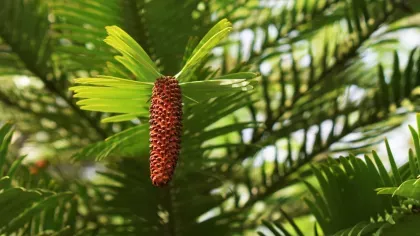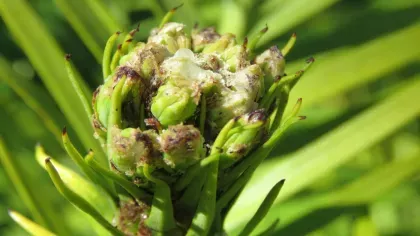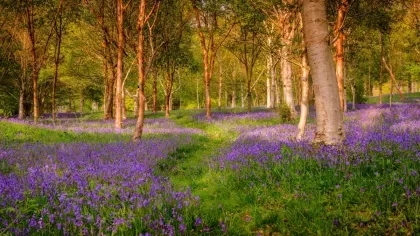21 January 2020
In pictures: The propagation game
From rare species to plants that hate the cold, our expert horticulturalists work hard to propagate and preserve our precious specimens.

Ever wondered how we grow new plants from seed and cuttings to create and maintain Wakehurst's wild botanic garden?
Our expert horticulturalists use a range of creative techniques to curate our living collections and germinate some of the rare or endangered species that are banked in the Millennium Seed Bank.
What is plant propagation?
Plant propagation is the process of growing new plants.
There are many different ways this can be done; new plants can be grown from seed, from cuttings, or from different parts of the plant.
At Wakehurst, we have nine glasshouses where we can propagate our plants. Some of the plants we grow are critically endangered, and may never have been grown in this way before.
You can see some of the plants that we grow in the gardens as part of our living collection, and others are kept for scientific research.
Protecting vulnerable young plants
We propagate seedlings that are too weak to grow outside when they're small plants.
These Allium carolinianum seeds are grown in a protective environment until they're strong enough to survive outside.
We sow them into seed trays, and once they germinate we space them out into individual pots to give them room to continue growing.
Once the plants get bigger and stronger, they'll be planted into our new Kyrgyzstan trial bed at Wakehurst.
Our scientists have an active conservation programme in central Asian Kyrgyzstan, a country with amazing wild flowers. We're using these beds to explore how we turn Kyrgyzstan’s meadow plant communities into garden design.


Preserving endangered species
Rhododendron mallotum is a rare species that grows on the border of China and Myanmar.
It's endangered and vulnerable to extinction due to the construction of new roads, and is listed on the Red List of Threatened Species. This is a list which assesses the level of threat to different species across the world.
We take cuttings from Rhododendron mallotum in order to propagate it. Back in the potting shed the propagation team remove some of the leaves to avoid water loss and the cutting is carefully trimmed to ensure it grows roots successfully.


The tray of cuttings is then placed into a temperate greenhouse with bottom heating, which heats the soil and helps the cuttings to root.
They're carefully looked after and misted twice-daily with rainwater.
Stunning crimson flowers bloom in early spring which contrasts with the dense cinnamon-brown indumentum (fine hairs) on the undersides of the plants' leaves.
See it blooming for yourself near the Westwood Valley viewpoint.


Indoors for the winter
Garden plants which are susceptible to cold wet winters or need replacement after a few years are propagated annually, like the colourful Penstemons which grow on The Mansion border.
Soft tip cuttings are taken in the growing season, which is where we cut the growing tip of a stem of the adult plant. This creates a new plant with a distinct root system and the same traits as the parent plant.
It's important that we only take the strong and healthy material, and we check to make sure it's free from pests and disease.


Cuttings are dipped into pans of well-drained cuttings mix compost.
The cuttings are watered with a fungicidal drench and put on a heated misting bench which helps the roots to grow and prevents the leaves from drying out.
After three weeks or so the rooted cuttings are ready to pot up, and then we plant them in the beds in spring.



Growing a collection of living fossils
Wollemi pines (Wollemia nobilis) were thought to be extinct for two million years.
But in 1994 a group of researchers were exploring the canyons of Wollemi in the Australian Blue Mountains, where they discovered a small group of them growing.
To conserve the newly discovered species, the trees were propagated and distributed to botanic gardens around the world. Wakehurst has 15 of the first ever Wollemi pines introduced to the UK.
Every year, we collect Wollemi seeds from the cones of our established trees growing in Coates Wood. Once the seedlings have grown roots, they're potted up gradually. We use pots which have small holes in the side to promote strong fibrous root growth, and once they're bigger we'll add them to our thriving living collection in the gardens.





